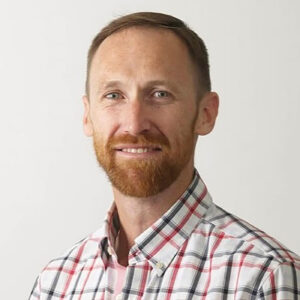Sponsored content brought to you by
Bringing a gene therapy product to market takes more than great research. Choosing a contract development and manufacturing organization (CDMO) that works closely with technology providers amplifies their individual know-how to help ensure patient safety, comply with regulatory agencies, and efficiently scale up from a benchtop protocol to industrial manufacturing.

Cytiva
Here, GEN talks with four experts about how the relationship between a CDMO and a technology provider can accelerate the transition from academia to industry while nimbly navigating technology challenges. Joining the discussion are Magnus Gustafsson, PhD, Head of Global Business Development at Biovian, a CDMO based company in Turku, Finland; Artur Padzik, PhD, AAV Production Manager at Biovian; Clive Glover, PhD, General Manager, Gene Therapy at Pall Corporation; and Åsa Hagner-McWhirter, PhD, Senior Scientist at Cytiva.
Getting started
A first step in gene therapy manufacturing is selecting the most appropriate delivery vector. Choosing the vector that best suits the application will save much difficulty later.
Adeno-associated viruses (AAVs) top the list. AAVs have a lower immunological response than adenoviruses and don’t incorporate their genetic cargo into the patient’s genome, as lentiviruses do.
“Should we try to optimize a problematic vector, or should we start working on a vector that’s safe from the beginning, but not the most efficient? The latter approach was chosen,” Padzik says. “Today, recombinant AAVs are the safest strategy for gene therapy and yet efficient.”
And you don’t have to sacrifice versatility, Padzik adds. “The AAV field is still relatively young, dynamic, and deeply rooted in academia,” he says. “The number of manufacturing platforms is growing and isn’t as crystallized as in the monoclonal antibody domain.”
Consider whether your therapy will be delivered to a small local environment, such as the eye, or intravenously throughout the body. It takes up to 100 viruses per cell to treat patients, so the production scale can mount quickly.

Biovian
“When you’re starting a new gene therapy company, you must consider what you can do, not just what you want to do,” notes Gustafsson. “The problem is you don’t get a whole lot of viral vector, but it takes a whole lot to add a gene into all cells.”
Also, you must decide what to do in-house and what to outsource. New companies need development and manufacturing that’s flexible and agile, but internal fixed costs are high. CDMOs provide this flexibility and agility.
Navigating demand: How much do you need to produce, and how often?
“It’s important to think about the production scale from the beginning, because it will impact other decisions,” says Hagner-McWhirter. “Paint a picture of all your activities from the start. Then design your lab to fit your needs, so you don’t find out later that it doesn’t work.”
“Technology providers can really help, because we work with whole process solutions,” she adds. “We provide good information and support.”
“You can use a simple equation to determine demand, although deciding on the right inputs is complicated,” Glover says. The equation considers the number of patients to treat per year, dose per patient, and the number of times you want to run your manufacturing per year.
“Sometimes in ultra-rare diseases, it seems attractive to do one manufacturing run per year,” Glover explains. “But if you’re only running it once per year, then you may not be very good at making your product.”
On the other hand, relying on frequent manufacturing runs can create a high-risk supply chain. Running several different processes in parallel can help split the difference, suggests Hagner-McWhirter, because you can transfer what you learn on one project to others. Also, even if the AAV serotypes behave differently in the purification steps, it will be an advantage to design the process to accommodate several serotypes or engineered capsids for flexibility and a platform-like approach.

Biovian
“You should implement all solutions at the preclinical stage so you know the whole profile works well,” Padzik says. “Then you can continue with large-scale production.”
Adherent or suspension cells: How to choose?
Adherent cells offer speed, all panelists agreed. And this approach has proven successful for AAVs.
Fixed-bed bioreactors overcome some scale-up challenges. Glover says, “The iCELLis® 500 bioreactor is used in the production of Zolgensma®, a gene therapy marketed product for SMA, spinal muscular atrophy. And several other therapies in late stage use this technology.”
Adherent cells have some advantages. “Chemical transfection is really good in adherent cells, but scalability may be limited,” Padzik says. Suspension cells—widely used to manufacture other biologics and increasingly used for gene therapy—can theoretically scale more.
Padzik adds, “It’s important to realize, though, that not all gene therapies will require very large scales. It might not be worth the additional time to develop a suspension system when the scale is modest.”
The need for speed
“Often, small companies are funded by venture capital, so time is not on their side,” says Glover. There’s a limited pool of people with expertise developing viral vectors, which can slow them down. Both Pall and Cytiva have programs to expedite scale-up processes from an academic setting to something suitable for large-scale production.

Pall Corporation
“In the last four years, Pall’s AcceleratorSM Process Development Services has scaled up more than 30 viral vector–based processes,” Glover says. Recently, Pall worked with Oxford University and AstraZeneca to scale up their viral vector process for producing the COVID-19 vaccine.
“We took their initial bench-scale process and developed a commercial-scale manufacturing process that we ‘tech transferred’ to a commercial manufacturing organization,” continues Glover. “We did it in eight weeks. That speed was possible because we had experience from developing other viral vector–based processes. Another option to outsourcing is making your own vector. “Cytiva’s FlexFactory™ platforms are used globally to reduce timelines and risks for mAb production,” says Hagner-McWhirter. “For these same reasons, they are being adopted by companies who want to make viral vectors and plasmids.”
Optimization depends on good analytics
“Many processing technologies exist, and they need to be optimized,” says Glover. “But if you don’t have good analytics, then you don’t really know what you’re optimizing.”
Cell-based manufacturing is inherently unstable from batch to batch, Padzik notes, because cells are living organisms. Reproducibility is a key, and end-to-end analytics are essential for attaining it. “Real-time process monitoring with multivariate data analysis throughout manufacturing would substantially help to achieve the goal,” he says. “That would support bringing the process into the stage where we can predict the outcome from first batch to last.”
“It’s critical to have control of the full and empty capsids,” adds Hagner-McWhirter. Good plasmid design as well as optimizing the transfection and upstream production can improve the ratio of filled to empty capsid, and during process purification development maximizing the recovery of capsids. It’s important to determine the exact proportions of filled, partially filled, and empty capsids. “You need something simple and quick at first, but then you also must use orthogonal methods to really control your sample’s content,” she explains.
“Analysis is probably the most ignored point,” Gustafsson says. “A lot of analytics need to be developed to run these programs and to understand complex molecules. We must stay in the forefront.”
Finally, the regulatory landscape can change quickly, Hagner-McWhirter notes, and failing to stay aware of updated policies can cost time and money. For instance, the use of Triton X-100 detergent was recently restricted in Europe due to health and environmental concerns. “We screened the local detergents to find an alternative for cell lysis and release of AAVs, and showed good results with Tween 20, a much more environmentally friendly detergent. Keep technical details like that in mind when you scale up,” she adds.
“The most important thing is to stay relevant to the clients,” concludes Gustafsson. “We cannot develop an excellent process if it isn’t scalable. We work with Cytiva and Pall extensively to ensure we develop processes that our clients can use.”
Learn about Biovian at biovian.com/AAV.
Learn about Cytiva at www.cy.tiva.com/aav.








